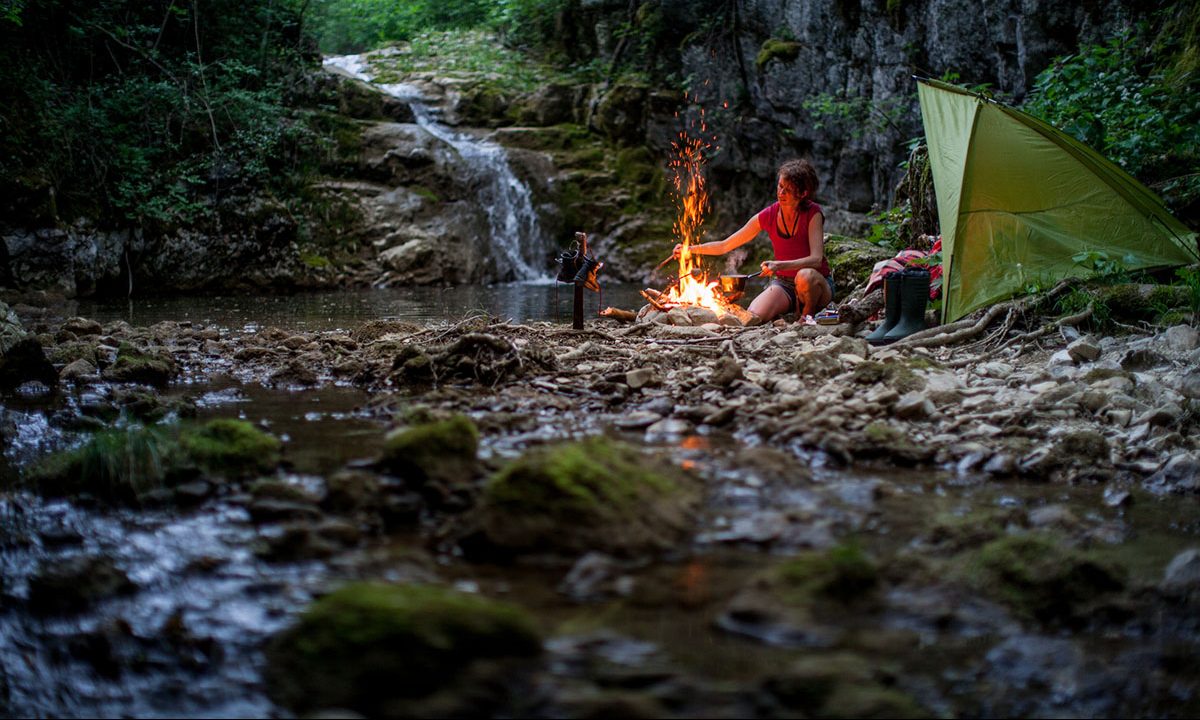

Camping can become a costly logistical nightmare for outdoor lovers. RVs, pop-up trailers, and cabin rentals don’t come cheap, require lots of planning, and often leave adventurers in noisy, crowded campgrounds. But primitive camping provides a much more versatile, affordable, and peaceful experience in the wild. This minimalist style of camping isn’t for everyone. But with some basic gear, a solid campsite, and a sense of adventure, primitive camping can connect true outdoor enthusiasts with nature for a remote outing in the great outdoors.
Videos by Outdoors
Primitive Camping Basics
Camping encompasses options that run the gamut from glamping in a digs decked out with high-end decor to sleeping directly underneath the stars in cowboy fashion.
Primitive camping still involves a basic shelter in the form of a tent but leaves campers in remote areas away from running water, electricity, and other comforts of home. Some primitive campsites in parks might offer fire rings or chemical toilets, but, generally, campers must be completely self-sufficient.
Primitive camping usually takes place in backcountry or wilderness areas that are only accessible by foot, often in national parks or forests, state parks, and other public access areas. This wild camping can be a bit risky with unpredictable weather, potential predators nearby, and typically no cellular service. But it also provides campers with virtually unlimited campsite options and the opportunity to escape everyday distractions to enjoy the great outdoors. If you want to go off-grid and be truly independent for a few days, primitive camping is for you.
Setting up a primitive campsite is relatively simple. Starting when you still have plenty of daylight to work with, you’ll want to choose a flat area with firm, solid soil. Especially in warm-weather months, a spot shaded by tree cover is best. Clear out rocks, pinecones, sticks, and any other pointy or sharp items that could pierce through your tent. Set up your tent, secure food from bears, and let the adventure begin!
Primitive camping regulations can vary from state to state and park to park. Some require primitive campers to set up a minimum distance from trails or bodies of water, while others prohibit the use of fire. Camping on certain federal or other public lands can require an inexpensive permit or reservations at a primitive campsite, so be sure to check local regulations before you plan your next outing.
Primitive Camping Gear & Essentials
Gearing up for a primitive camping trip demands securing all the basics you need to survive while sticking with the bare minimum and cutting out luxuries since you’ll likely be carrying all gear on your back for miles.
The specifics will depend on how long you’re camping, where you’re going, and what the conditions will be like. But these are the essentials every primitive camper should pack.
- Tent: The best tent for primitive camping will vary based on the number of people sleeping in it and the conditions you’ll encounter. Generally, a durable, lightweight tent with a rainfly is essential.
- Sleeping pad and/or sleeping bag: A good night’s sleep can make backcountry adventures much more enjoyable, so a comfortable setup inside your tent is important. A lightweight sleeping pad and a sleeping bag can provide you with enough warmth and cushion between you and the ground to keep you snoozing all night long.
- Food and water: Keep yourself energized and hydrated on primitive camping trips to stay healthy and happy. Even if you plan to catch your meals in a backcountry creek, you should pack enough sustenance as a backup plan. Protein bars, meat snacks, fresh or dried fruit, and dehydrated meals are great options — but be sure to keep it all in bear-proof storage. Pack some type of water filter device and research water sources ahead of time.
- Fire starter or waterproof matches: Whether you want to roast a fresh catch over flames or strike up a campfire to stay warm, having a reliable method for starting a fire can be convenient and even life-saving. Before you safely start a fire in the wild, check local regulations and make sure no fire bans are in effect.
- First aid kit: Sprains, scrapes, cuts, and blisters often occur in the wild, so keep a compact first aid kit with all the basics with you at all times.
- Knife: You might need to cut a branch, slice open food packaging, or trim down a piece of gauze. Having some type of blade in the form of a survival knife or multi-tool is always a smart strategy.
- Headlamp and/or flashlight: When nature calls and you need to slip out of the tent in pure darkness or you’re stuck setting up camp after sunset, a portable light source will come in handy.
- Toilet paper: Since you likely won’t be encountering any restrooms on your camping trip, a roll of toilet paper is essential.
Depending on where and when you’re camping, some other items you might want to add to your packing list include sunscreen, insect repellent, baby wipes, a portable stove, rain gear, and a satellite phone.
A key tenet of primitive camping is the “leave no trace” principle, so be sure to pack out any food wrappers, empty bottles, and used paper products with you when you leave.
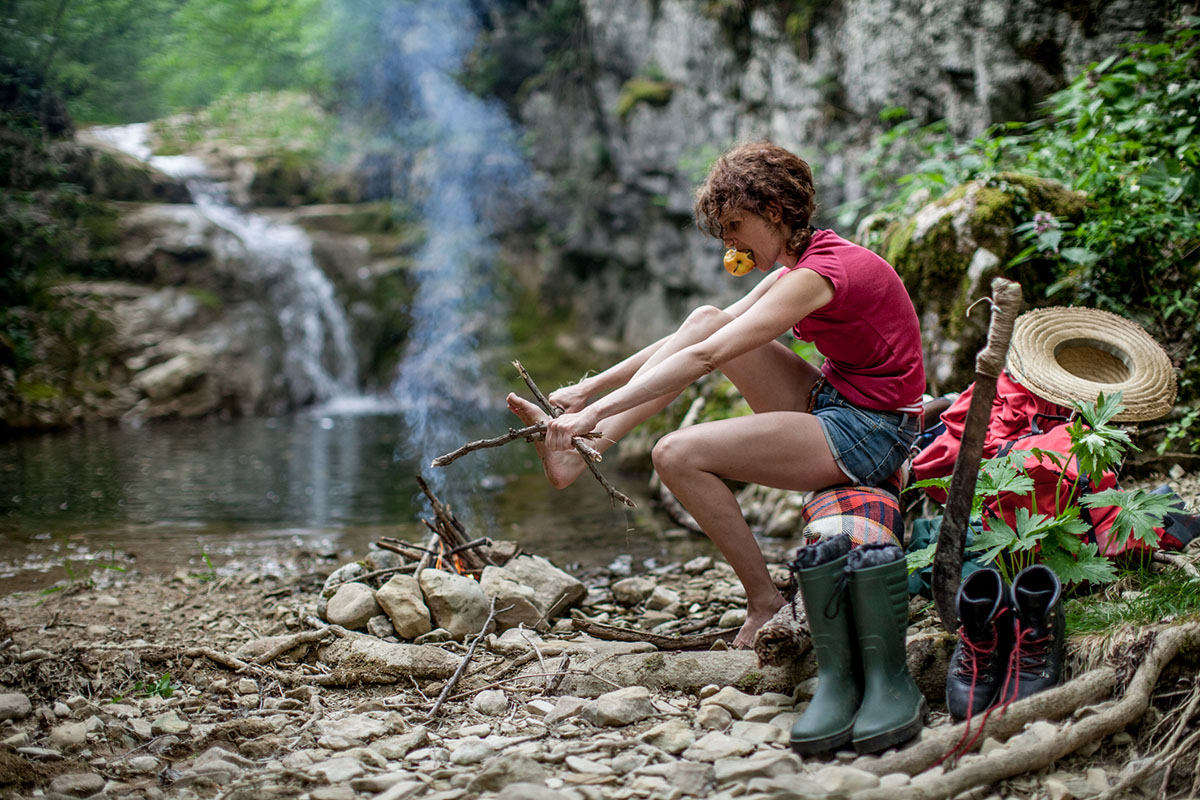
Primitive Camping FAQ
What does primitive mean on a campsite?
Primitive campsites within state and federal lands can vary, but typically this means you won’t have any access to running water, electricity, or the amenities often found in other campsites. When primitive camping, you’ll be self-sufficient.
What do I need for primitive camping?
The ideal gear list will vary based on conditions, but primitive camping essentials include a tent, sleeping pad, sleeping bag, food, water filtration device, fire starter, first aid kit, knife, headlamp, and toilet paper.
What are the 3 most common types of camping?
RV camping, car camping, and primitive camping are some of the most common types of camping among recreationists. Car camping allows for loading up lots of gear and sleeping in a campground equipped with family-friendly amenities, while RV camping often offers access to a full kitchen, running water, and electricity. But primitive camping takes adventurers to remote locations with just the bare essentials.
What is the difference between primitive and dispersed camping?
The terms “primitive camping” and “dispersed camping” are often used interchangeably and can often refer to the same style of camping. Both entail camping in tents without access to running water, electricity, and other amenities. Federal agencies define dispersed camping as anything outside of designated campgrounds within public lands — even if it’s right off a road within a national park. Primitive camping, though, usually implies a more remote locale.
Primitive camping can be a great option for self-reliant outdoor enthusiasts who want to go off-grid and spend a few days in the wilderness with nothing more than the gear they can carry on their backs. What it lacks in amenities, it more than makes up for in peaceful tranquility. Equipped with just a few basic essentials, some camping know-how, and sheer determination, you can enjoy primitive camping in public access areas throughout the country. Want to try your hand at primitive camping but not ready to invest in a high-quality tent? Check out everything you need to know about renting tents.


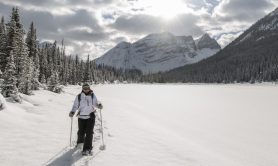
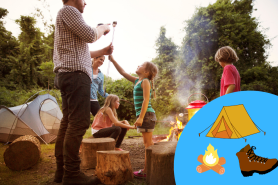


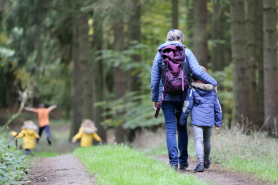



FYI: The photo for primitive camping shows someone camping way too close to their water source. Should be at least 100 ft away.